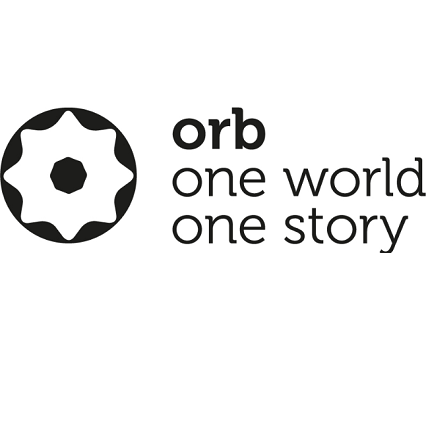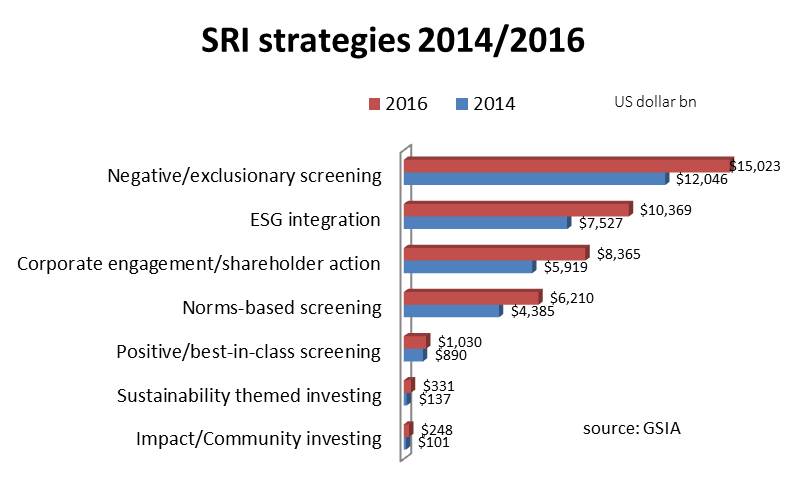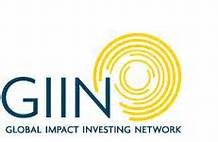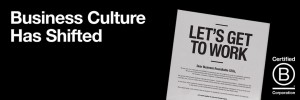 On August 19th, 2019 the Business Roundtable (the association of CEOs of America’s leading companies) released a new Statement on the Purpose of a Corporation. This new statement was signed by 181 CEOs who commit to lead their companies for the benefit of all stakeholders-customers, employees, suppliers, communities and stakeholders. This is a significant move away from their stance since 1978 as principles issued until now endorsed shareholder primacy (that corporations exist principally to serve shareholders).
On August 19th, 2019 the Business Roundtable (the association of CEOs of America’s leading companies) released a new Statement on the Purpose of a Corporation. This new statement was signed by 181 CEOs who commit to lead their companies for the benefit of all stakeholders-customers, employees, suppliers, communities and stakeholders. This is a significant move away from their stance since 1978 as principles issued until now endorsed shareholder primacy (that corporations exist principally to serve shareholders).
The long-awaited paradigm shift! Or shall we be sceptical that these changes will be implemented?
In the days following this announcement, we have seen debates shaping and many cautionary but constructive articles being published. There was an immediate critical response announced by the Council of Institutional Investors raising outdated concerns that the statement undercuts notions of managerial accountability to shareholders. The B Corporation movement founders, who have been in the forefront of redefining the role of businesses into one that delivers value to all stakeholders, published an excellent article “Don’t Believe the Business Roundtable has changed until the CEOs’ action match their words” This title sounds a bit harsh but it is important to hold the CEOs accountable and a full-page ad “Let’s get to work” was posted in the Sunday New York Times urging them to get to work (together).
In addition to the B Corporation movement, there has been in the past few years some signs of this impending paradigm shift as witnessed by the letters to the CEOs written by Larry Fink, CEO of BlackRock “linking purpose and profits”. Another powerful movement that is growing is lead by Singularity University which is shaping leaders and organizations by using exponential technologies to tackle the world’s biggest challenges and build a better future for all. This latest statement by the Business Roundtable is a gigantic step forward and although it might take some time until their action matches their words, slowly but surely we are getting aligned and moving in the right direction. No turning back.
Category Archives: concept
Future of Learning Graphic Novel now Live (Singularity U)
The output of the workshop, the graphic novel of the Future of Learning is now live! Also SU has created the Exponential Guide to the Future of Learning, which provides valuable content and resources on this topic.
From SU website;
The Future of Learning SciFi DI workshop brought together more than 50 participants, including SU Faculty and staff, startups, mentors, and alumni, as well as local teachers, students, nonprofits and foundations all connected to the field of learning innovation. We explored trends in exponential technologies, took a deep dive into augmented reality and virtual reality, discussed the future of learning and work. Identifying current challenges in the global education system, we tried to re-imagine these challenges after assuming a number of technological and social advances that could occur within fifteen years. Then the participants were led through a process of capturing the life and story of an individual living fifteen years into the future, which artists and writers in the room transformed into the graphic novel. Through the characters of the novel we explore central questions about the future purpose of learning, what it will mean to be a student or teacher in the future, what a school might look like in the future, what a curriculum might look like, and what life might feel like in general. In particular, we imagined a world where a school could follow the student instead of the student attending a school, where today’s learning curriculum and grading system is replaced by students advancing in their learning by solving real-life problems, where the boundary between being a student and teacher blurs, and where adults and children often learn together.
While we hope you’ll enjoy immersing yourself in this particular version of the future, we encourage you to design your own. What will a student, teacher, school, and curriculum look like? What technologies would you incorporate, and how would they help bring about a world where everyone could be inspired to learn and teach, solve real-world problems, and find opportunities to contribute to their community?
Science Fiction Design Intelligence workshop “The Future of Learning” at Singularity University
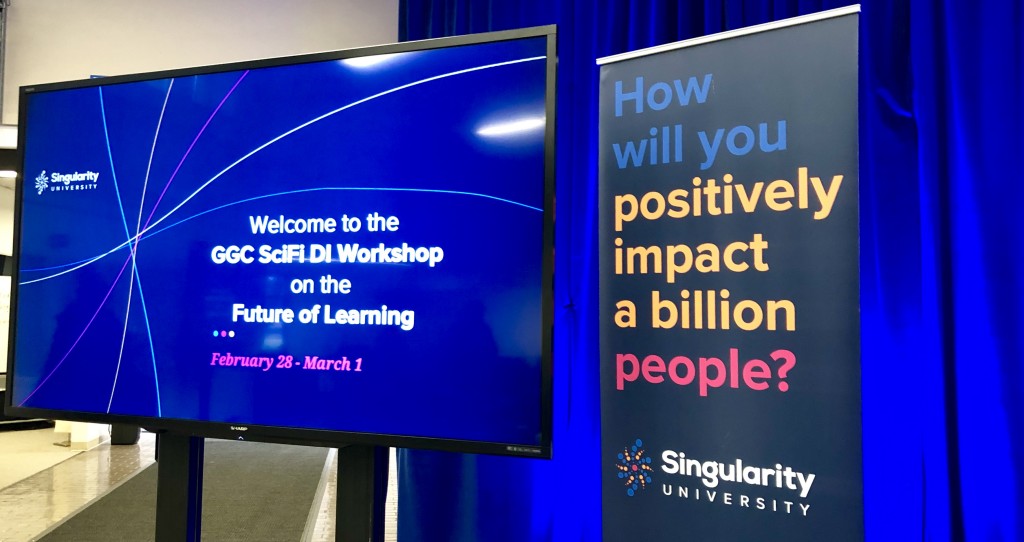 The Future of Learning was an exhilarating two-day workshop (Feb 28-March 1) at Singularity University (SU) that I was fortunate to be part of. The methodology SciFi-DI developed by SU is a compelling unique approach to innovation. It is used to design future visions by leveraging science fiction to look 15 years into the future and then retrocast to redefine what we could build today. See here a great example of a SciFi-DI workshop that SU conducted in the past “The Future of Home”
The Future of Learning was an exhilarating two-day workshop (Feb 28-March 1) at Singularity University (SU) that I was fortunate to be part of. The methodology SciFi-DI developed by SU is a compelling unique approach to innovation. It is used to design future visions by leveraging science fiction to look 15 years into the future and then retrocast to redefine what we could build today. See here a great example of a SciFi-DI workshop that SU conducted in the past “The Future of Home”
We were a very diverse group of 50 including a number of SU faculty and staff as well as talented artists and storytellers. The workshop started with “deep immersion” to exponential thinking and technologies and how these would affect the future. Then we worked in groups of 3-5 using 7-8 worksheets.
1) Frame the problem, a potential solution, define what issues must be addressed, the challenges in each area (Societal, Technological, Environmental, Economic, Political or in short STEEP)
2) Select from a list of predictions which ones we think will become true by 2034 (STEEP Framework)
3) Retrocast by working backwards from 2034 noting key activities, partnerships and milestones required to develop this solution using STEEP segments
4) Character development: create a person/robot through whom we would be illustrating the problem and the solution
5) Brainstorm: the worst and best ideas to solve this problem
6) Develop a key concept worksheet
7) Write a scenario/storyline using the character (setting the scene, normal day… until one day, solution and result) At this point we got help from the artists.
All 12 groups presented their problems/solutions. We all got 4 votes each to cast on the favourite story/solution. The winner was the story of Nuni, an AI empathy and an educational bot and Yabi a 9 year-old kid living in Chad. Nuni checks Yabi’s individualized educational plans, creates digital content and most importantly, facilitates interaction with other children (real and virtual) by directing Yabi to interactive collaboration spaces. It also interacts with other Nuni’s to create a happy, healthy and safe learning environment. So using technology to increase human interaction.
The beauty is that SU will make a comic book out of this and will be distributed to the public for free!
Thank you SU team!
Digesting and expanding on the learnings from Singularity U. We are just getting started….
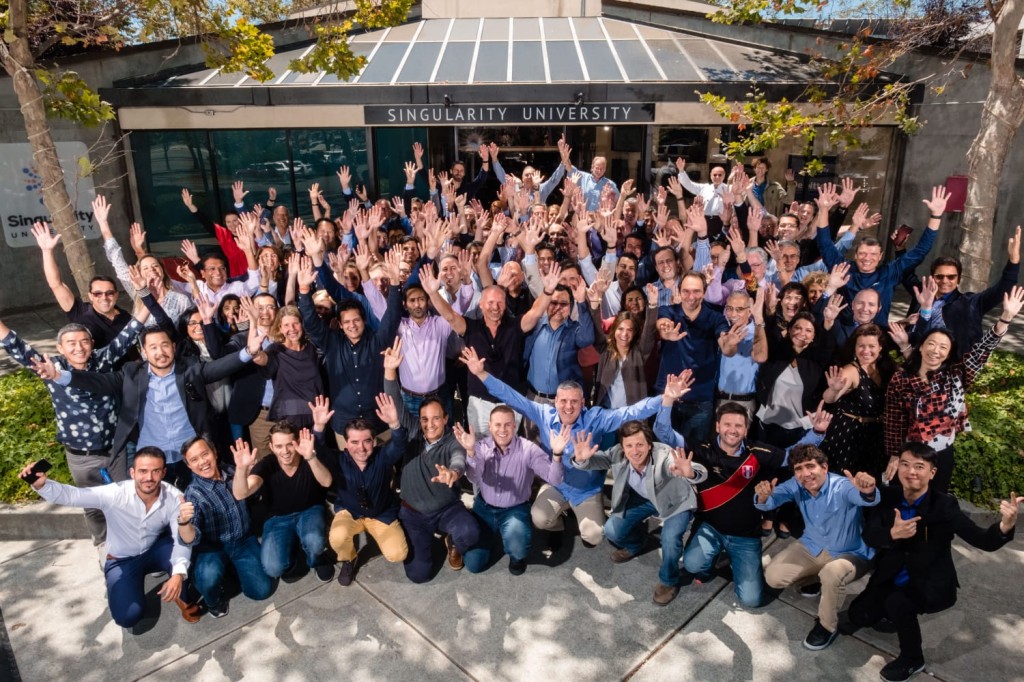
8 weeks have passed since the intense week at Singularity U, where 92 curious and fun minds were exposed to and learned from the awesome experts in the field of exponential technologies as well as from each other.
Some of the phrases that stuck and continue to sink in:
-unlearn, be bold
-be adaptable
-the biggest risk is not thinking big enough
-make a note to my future self
-ask good questions
-data integrity… screen for the truth
-machine learning, cloud robotics
-blockchain, a new way to consider trust
-abundance: rising income, lifespan, food and water availability
-massive cost reduction: energy, VR, human genome sequencing, in-vitro meat, 3D printing
-digital manufacturing in space
-XR (extended reality) will accelerate dematerialization (spaces & experience)
-inclusive abundance: imperative for human survival (is it possible?)
-longevity escape velocity
-nanobots in our brains in 2030?
-quantum/blockchain/solar/AI supremacy converging in 2025?
-reframe strategy: zoom in (6-12m) zoom out (10-20 years)
-technology will allow us to do everything… exciting and a bit scary if used badly
-importance of ethics and moral enhancement
We did learn a lot then, but now it feels that the executive program was just the beginning. We are sharing great stories and news, asking better questions, so we continue to accelerate our learning journey. We are also connecting people from our networks and aiming to scale the positive impact that we can create while finding solutions to the great challenges. How exciting it is imagining what we can achieve collectively over time! Thank you SU and SU colleagues!
Orb Media, a new kind of journalism that we truly need
 On June 26th, I was fortunate to attend an exclusive event where Molly Bingham, the founder of Orb Media, philanthropist, filmmaker, photographer and journalist, shared with us her amazing journey. This event was organized by Women and Philanthropy (thank you Kecia Barkawi!).
On June 26th, I was fortunate to attend an exclusive event where Molly Bingham, the founder of Orb Media, philanthropist, filmmaker, photographer and journalist, shared with us her amazing journey. This event was organized by Women and Philanthropy (thank you Kecia Barkawi!).
Molly is Founder and CEO of Orb Media, which produces a new kind of journalism that challenges the way we see our world and brings us together around the things we share. At a time when we most need to see the full picture of our planet, today’s journalism is showing us only fragments of it. As people, we have our differences, but we share a core that profoundly outweighs them.
Orb Media is a nonprofit journalism organization that reports on issues that matter to billions of people around the globe. Fusing original research, data analysis, on the ground reporting, and an engaged public, Orb Media produces agenda-setting stories about the challenges we face together as one world.
Rather than bombarding the public with breaking news while providing little in the way of context, Orb practices proactive journalism. Orb asks how events may (or may not) fit into a meaningful, global trend by covering 8 topics (linked to the UN Sustainable Development Goals) that affect each of us every day: Food, Water, Energy, Health, Education, Environment, Trade and Governance. Orb produces professional and fact-based journalism exploring these topics that touch billions of people across national, cultural and linguistic differences. Orb delivers each story in four versions – text, audio, multimedia and data – in the world’s most widely spoken languages. The stories are designed to be accessible on any internet connected phone, tablet or computer. The stories are distributed through The Orb Media Network (OMN) which is composed of agenda-setting media brands from around the world who simultaneously publish stories researched and reported by Orb in order to present their audiences with fact-based, quality information on global issues. By working in this way Orb and the OMN catalyze global dialogue on critical issues, focusing the attention of government, industry, researchers, civil society, and the public. (source: orbmedia.org)
Some of their recent stories include Invisibles- The plastic inside us, a story revealing how plastic fibers have contaminated tap water around the world, this was followed by the alarming story Plus Plastic – Microplastics found in global bottled water and the most recent one is Age Well – attitudes matter in a graying world. All these stories are important to all of us in the interconnected world. Orb is remaking journalism to one that the world truly needs.
I was also hugely impressed and inspired by Molly, her courage, dedication, passion, and her journey. Molly comes from generations of pioneering journalists, in fact, she is the 4th generation. She is an award-winning journalist, photojournalist and filmmaker. In 1994 she started as a photographer traveling to Rwanda to cover events after the genocide she continued to cover war areas such as Burundi, Zaire, Chiapas, Russia, Sudan, Sierra Leone, Afghanistan, the Gaza and Iraq. She has worked with Human Rights Watch for three projects and also worked as the official photographer of Vice President Al Gore at the White House. In 2003, she survived a 7-day captivity at Abu Ghraib prison in Baghdad. As co-director of the documentary film “Meeting Resistance” she was awarded the “Golden Award” at the 2007 Al Jazeera International Documentary Film Festival. Her passion and commitment to journalism which was tested through her experience in the prison in Baghdad has lead her to remake journalism to catalyze global dialogue and create massive positive change. Thank you Molly! Watch her powerful TEDxtalk. Molly Bingham at TEDxSMU.
What does sustainable investments, ESGs, SDGs and impact investments mean?
Sustainable investing, SRI, impact investing, Sustainable Development Goals (SDGs), Environmental, social and governance (ESG) criteria are words that we are exposed daily as it is used by investors, banks, asset managers, corporations, consultants as well as the media. It is great that this movement is mainstreaming, however, how can we make sense of figures like $23 trillion in SRI assets on one hand and a much smaller figure of $144bn in impact investment assets? It is important to understand the differences so that we can compare apples with apples and gain clarity on this growth area. This article uses the definitions by the two resources that are most established in this area; the Global Sustainable Investment Alliance (GSIA) and the Global Impact Investment Network(GIIN)
Sustainable investing is an approach to investment where environmental, social or governance (ESG) factors, in combination with financial considerations, guide the selection and management of investments.
Sustainable investing is the umbrella term that incorporates social responsible investing, SRI, impact investing and it encompasses the different strategies/activities. According to GSIA, global SRI assets in early 2016 reached $22.89 trillion, a growth of 25% compared to 2014. The strategies and activities under sustainable investments are shown below.
THe top 3 strategies; negative and exclusionary screening (15 tn), ESG integration (10.3 tn) and corporate engagement/shareholder action (8.3 tn) are very large established strategies while impact/community investment (248 bn) and sustainability themed investing (331 bn) are growing fast but still very small.
ESG (Environmental, social and governance) refers to sustainable investment criteria used alongside traditional financial criteria in managing and selecting investments. ESG is a criterion, the word is also used as ESG factors, ESG metrics and ESG integration, which is one of the largest strategies within sustainable investments.
The use of ESG by institutional investors has been rising over the past 15 years as a result of increasing evidence that integrating ESG factors in the investment process can actually improve the risk/reward of investment portfolios.
Impact Investments – Investments made into companies, organizations and funds with the intention to generate social and environmental impact alongside a financial return (source: GIIN)
Impact investment is an approach to investments and is a fast growing but the smallest subset and strategy within sustainable investments. The differentiator of this approach is the intentionality to generate positive social and environmental impact and the commitment to measure it. In terms of market size there are two benchmarks: 1) GIIN’s $144bn based on their annual survey of assets aggregated by their respondents in 2017, and 2) GSIA 2016 Review which shows the assets of the category Impact and Community investments at $248bn.
Sustainable Development Goals (SDGs)
The SDGs, a set of 17 goals was adopted in Sept 2015 by the UN “to end poverty, protect the planet and ensure prosperity for all “. The goals have specific targets to be achieved by 2030. The development of indicators and monitoring framework for the SDGs which followed has attracted many investors and asset managers to commit to invest in these goals. The SDGs are now being adopted as a framework in many of the sustainable investment strategies including impact investment funds.
Impact Investment update: GIIN’s annual survey 2017
The key highlights of the GIIN’s 2017 Annual Impact Investor Survey are shown below;
• In aggregate, 205 respondents invested USD 22.1 billion into nearly 8,000 impact investments in 2016 and plan to increase capital invested by 17% to USD 25.9 billion in 2017.
• In total, 208 respondents currently manage USD 114 billion in impact investing assets.1
• Nearly universally, respondents measure their social and/or environmental performance, using a mix of proprietary metrics, qualitative information, and IRIS-aligned metrics.
• The overwhelming majority of respondents reported that their investments have either met or exceeded their expectations for both impact (98%) and financial performance (91%).
• While two out of three respondents principally target risk-adjusted, market rates of return, there is widespread acknowledgement of the important role played by below-market-rate-seeking capital in the market.
Innovations in impact measurement
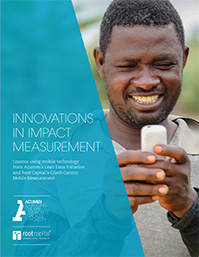 Last November, I attended an inspiring presentation by Acumen where I heard for the first time about their Lean Data Initiative for impact measurement. The main advantages of this approach are: collecting meaningful data through lean surveys in less time and with less cost by using low cost mobile technology. In addition, it can be used as an interactive tool, to not only measure, but manage impact as key data is collected efficiently providing a fast and clear insight of the social performance achieved. This is quite a revolution from the traditional impact measurement that was designed primarily for the use of donors and investors. This puts the customer/beneficiary first and it becomes a management tool for the service/product providers to improve their ongoing operations in order to deliver even higher social impact. Another pioneering organization that has been developing new tools and methodologies leveraging technology for measuring social and environmental impact is Root Capital. Root Capital is an agricultural impact investor that grows rural prosperity in Africa and Latin America by providing loans and training to agricultural enterprises that are reaching small-scale farmers. Root Capital’s Client-Centric Mobile Measurement aims to generate the data needed about impact on small-scale farmers, while creating value both for the farmers and for the agricultural enterprises. These innovations are significant as it will improve and increase positive social and environmental impact and also accelerate and increase investments for impact.
Last November, I attended an inspiring presentation by Acumen where I heard for the first time about their Lean Data Initiative for impact measurement. The main advantages of this approach are: collecting meaningful data through lean surveys in less time and with less cost by using low cost mobile technology. In addition, it can be used as an interactive tool, to not only measure, but manage impact as key data is collected efficiently providing a fast and clear insight of the social performance achieved. This is quite a revolution from the traditional impact measurement that was designed primarily for the use of donors and investors. This puts the customer/beneficiary first and it becomes a management tool for the service/product providers to improve their ongoing operations in order to deliver even higher social impact. Another pioneering organization that has been developing new tools and methodologies leveraging technology for measuring social and environmental impact is Root Capital. Root Capital is an agricultural impact investor that grows rural prosperity in Africa and Latin America by providing loans and training to agricultural enterprises that are reaching small-scale farmers. Root Capital’s Client-Centric Mobile Measurement aims to generate the data needed about impact on small-scale farmers, while creating value both for the farmers and for the agricultural enterprises. These innovations are significant as it will improve and increase positive social and environmental impact and also accelerate and increase investments for impact.
Learn more.
ACUMEN: boldly changing the way the world tackles poverty
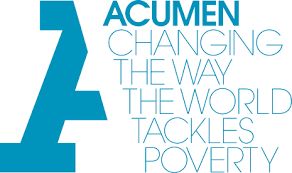
Acumen started operations in 2001 with a pioneering concept, a non-profit venture capital for the poor, using philanthropic (patient) capital to invest in entrepreneurs that would be capable to create sustainable solutions to big problems in poverty. For the past 15 years, they have been helping to build companies, developing leaders and sharing ideas. Their impact to date: $103m invested in 96 companies, 200 million lives impacted, 310 leaders developed, 17 Acumen Chapters, and 320,000 people have signed up to the Acumen leadership courses. Impressive figures! However, why Acumen continues to be one of the leaders/innovators in this field is because they can’t be content on just seeing these figures. They go deeper in trying to understand the real impact (qualitatively) by developing impact measurement/metrics.
Our Impact Framework: We work to understand impact from the moment we begin due diligence on a company throughout the lifetime of the investment. Working closely with our companies, we generate, analyze and use data that enables them to understand and improve their social performance. Our aim is to unlock their full potential and achieve the greatest social change for the customers they serve. (source Acumen)
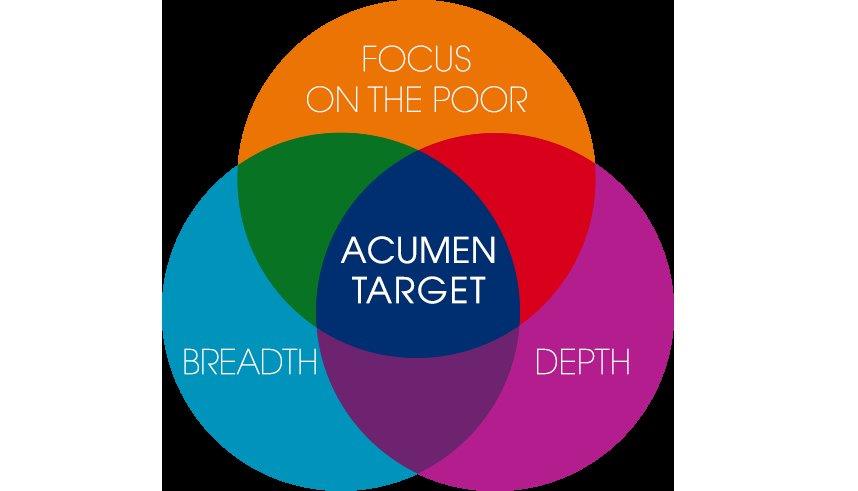
As Acumen defines its success as how well their investments are enabling the poor to improve their own lives for the long term, they measure the social performance across 3 dimensions: 1) the focus on the poor 2) the breadth (the number reached) 3) depth (improvements). So they look at impact from all these fronts. They use lean data which has made it much more efficient, faster and cost efficient to understand their impact. Another great contribution of Acumen is how they share their ideas and findings. +Acumen which comprises online free leadership courses and is rapidly becoming “the world’s school of social change”.
Acumen’s Dr. Ambika Sampat spoke about Acumen’s journey on Nov 16 “Zurich Social Investment Breakfast Club” facilitated by Rianta Capital and hosted by RobecoSAM. Thank you all and congratulations to the amazing team of Acumen!
Additional info and suggestions
Jacqueline Novogratz Ted Talks She has delivered 5 TED talks.
Acumen’s manifesto
Writeup on Jacueline Novogratz’s book ” The Blue Sweater”
womeneffect.com – a platform accelerating investments in women and girls
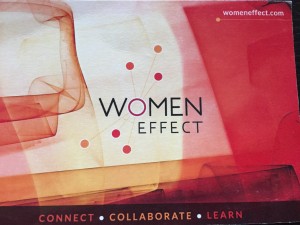 Every year very interesting forums and meetings take place in the second half of January here in Zurich as these are scheduled before and after the WEF forum in Davos. This year we had the seif Congress on Impact Investment and Social Innovation, a nice venue providing an overview of the current state of impact investment in Europe and promoting the building of an ecosystem in Switzerland. Coinciding with this Congress there was a meeting launching the Women Effect.
Every year very interesting forums and meetings take place in the second half of January here in Zurich as these are scheduled before and after the WEF forum in Davos. This year we had the seif Congress on Impact Investment and Social Innovation, a nice venue providing an overview of the current state of impact investment in Europe and promoting the building of an ecosystem in Switzerland. Coinciding with this Congress there was a meeting launching the Women Effect.
We believe that investing in women and girls is not only right, it is smart. It leads to positive returns for investors and better social and economic outcomes for everyone. This is the women effect.
– Suzanne Biegel, founder of womeneffect and a pioneer in gender lens investing.
Women Effect is a global community of generous men and women, individuals and institutions (investors, philanthropists and wealth managers) who have come together to accelerate the women effect in the most strategic and efficient way. It is a platform to learn connect and collaborate, accelerating investments in women and girls. Suzanne’s article on this subject.


